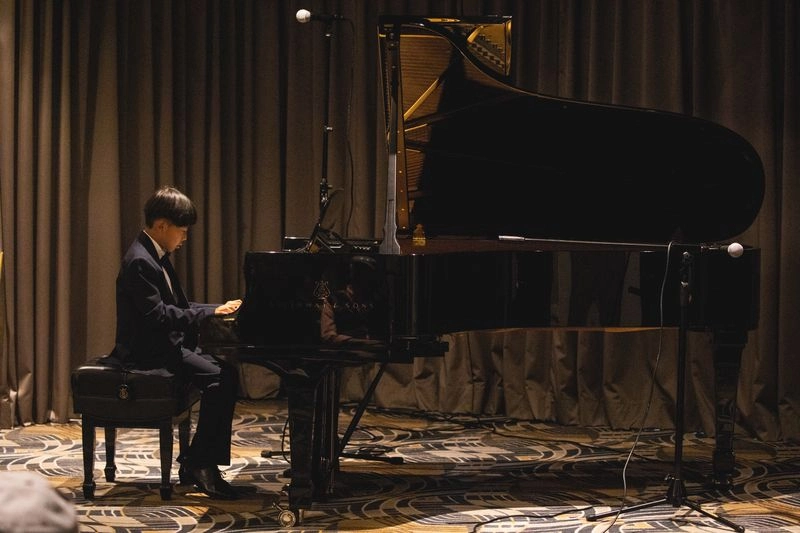If you’ve ever wondered why two identical violins can sound like two different planets, start with the violin strings. They’re the voice box, the tone engine, the difference between singing and squeaking.
And yes, we’ll hit everything you asked for: string types, string notes, how many strings does a violin have, and what are violin strings made of, in plain English. Along with real experential advice for parents (comfort and stability first) and students (tone without drama). Consider this your friendly decoder for all the strings on violin choices.
Let’s anchor the basics so you stop doom-scrolling and start sounding better.
How many strings on a violin? (Or What are the 4 strings on a violin?)
Four. Tuned in perfect fifths: G–D–A–E. The outlier is a 5 string violin that adds a low C. Fun for fiddlers and fusion, not required for 99% of learners.
Violin string notes (aka “open strings”):
- G3 (that’s your violin G string notes home base),
- D4,
- A4 (the concert A = 440 Hz),
- E5 (where violin E string notes can get shiny fast).

These are also your violin string names; teachers will say “open G,” “open A,” etc. If your tuning ritual feels like a boss fight, tune A first (to a tuner or piano), then tune fifths by ear. No audible beats = “locked.”
What are violin strings made of?
Three families:
- Steel core (solid or stranded). Clear, bright, very stable, long-lasting, budget-friendly.
- Synthetic core (nylon/composite). Warm like gut, stable like steel, the modern “best of both.”
- Gut core (the old master). Gorgeous color and bloom… also extremely weather-sensitive and needy.

If you’re a parent: your quickest win isn’t a premium rosin; it’s a set of stable strings that stay in tune and speak easily so your kid spends lessons playing music, not wrestling pegs.
Smart read for motivation:
- Learn New Skills and Keep Your Brain Young: Learning to Play a Musical Instrument
- The Benefits of Music Education at Every Age
If you want a human to sanity-check size, setup, and strings, book violin lessons at Angeles Academy of Music. Keep it light; we’ll keep it helpful.
Choosing Strings That Actually Fit You (Kids, Adults, and Everyone Between)
Think of string families like coffee styles. Steel is espresso. Direct, punchy, zero fuss. Synthetic is a flat white: rounded, versatile, and goes with anything. Gut is Turkish coffee. Sublime, ritual-heavy, not great if you’re late for school.
For beginners (kids and adults)
You want an easy win: strings that speak quickly, hold pitch, and survive practice. Choose steel-core, medium tension.
They forgive inconsistent bowing and don’t throw a tuning tantrum on hot days. If your rental came with mystery factory strings, a basic upgrade can make it feel like a new instrument.
Looking for a named set? Student staples include D’Addario Prelude, Thomastik Alphayue, and other school-friendly steels. If you’re testing synthetics right away, pick forgiving ones (e.g., Tonica, Ascenté) and stick to medium tension.
For advancing students or adult returners
You’ve got a grip on bow control and want tone that feels like a voice. Go synthetic-core, medium tension. This is the modern default for “nice sound without gut chaos.” Workhorse sets that rarely disappoint: Thomastik Dominant (yes, Dominant violin strings are classics for a reason), Pirastro Tonica (budget-warm), D’Addario Zyex/Ascenté (stable, modern). Need more projection for recitals? Consider Pirastro Evah Pirazzi or Thomastik Vision. They are livelier, a touch higher tension.
For purists and period lovers
Gut can be magical. It’s also short-lived, humidity-sensitive, and needs more tuning. If your schedule says “practice from 6:10–6:30 a.m. between school drop-offs,” gut may test your patience. If your schedule says “slow practice, beautiful sound, long bows,” you’ll enjoy it.
Tension, gauge, windings (read this once; remember it forever)
- Tension: light (easier feel, quicker) / medium (default) / heavy (more resistance, more power).
- Gauge: thicker = darker and stronger but slower; thinner = brighter and faster but less oomph.
- Windings (aluminum, silver, tungsten, chrome) tweak color and feel; sweaty hands often prefer silver/chrome to avoid corrosion.
If your E shrieks, try a slightly thicker or plated E. Many players “mix” an E from a different brand. It’s not cheating; it’s smart.
Parents’ quick-hit playbook
- Fit first. A correctly sized violin beats a fancy string on the wrong size. Measure neck → mid-palm; if in-between, size down for comfort.
- Start stable. Steel or friendly synthetics reduce tuning drama.
- Spend where it matters. An extra $25–$50 on strings often saves weeks of frustration.
- Ask the teacher. Studios sometimes prefer a standard set for ensemble blend.
FAQs: Most Common Violin Strings’ Queries We Receive From Students & Parents
How long do violin strings last?
Depends how much you play. Heavy daily practice? Expect 3–4 months. Typical students? Around 6–9 months. Casual practice? You might stretch them to a year before they give up.
How do I know it’s time to swap strings?
Listen and look. If the pitch won’t settle no matter how much you tune, the sound goes thin and “papery,” the windings start to fray, or your E string whistles like a smoke alarm—time to change.
What’s the easiest maintenance I can do?
Wipe. Every. Single. Time. After you play, run a soft cloth over the strings and fingerboard to clear rosin. Just don’t use alcohol near varnish—one slip and your violin wears a scar forever.
Can I replace all my strings at once?
Please don’t. Swap one at a time. That way the bridge stays upright and your soundpost doesn’t panic.
My fine tuners are screwed all the way in. Now what?
Back them out halfway, tune up with the pegs, then use the tuners again. Think of it as resetting the “wiggle room” for your next practice week.
How do I know what violin size my child needs?
Whether you’re buying a violin for your child or yourself, use neck → mid-palm measurement with the arm slightly forward. If the elbow fully straightens just to reach the scroll, it’s too big. Slight bend is perfect. For a more elaborate guide, check out our article on violin sizing.
Which strings are best for violin?
“Best” isn’t a trophy; it’s a fit. For stability and budget, steel student sets are the best violin strings to start with. For warmth and color, synthetics like Dominant violin strings are the all-rounder many teachers trust. For power and brilliance, sets like Evah Pirazzi are popular. Start medium tension. Change one string at a time. Let your ear judge after a week.
What are violin strings notes?
G3–D4–A4–E5. If you’re thinking “notes in violin strings” vs “violin string names,” they’re the same thing in beginner land. Open-string letters.
How many strings does a violin have / how many strings on a violin / how many strings do a violin have?
Four. If you saw five, it’s a specialty instrument or electric.
What about ‘violin and string’ or ‘strings on a violin’?
Both phrases point back to the same fundamentals: Choose a core type (steel/synthetic/gut), pick medium tension, and buy a reputable set that matches your level.
“Violin string bass.” What is that?
Usually a search mix-up between violin strings and bass strings. Different instruments, different string lengths, different tuning. If you meant “low end on the violin,” that’s your G string choice and setup (and your bow weight/contact point).
Conclusion
If you’re thinking about starting violin lessons, whether you’re a parent looking for children’s violin lessons near you, or an adult beginner curious about private violin lessons; violin strings are often the first big question. Hope this article was helpful for finding the perfect strings on violin you choose. The right set can make practice less frustrating and more fun.
When you’re ready for further guidance, book your spot for violin lessons at Angeles Academy of Music.
At Angeles Academy, we work with students of all ages, from kids picking up their very first violin to adults returning after years away.
Whether you prefer in-person or online violin classes, our teachers walk you through setup step by step, so both you and your instrument are ready to play.
.svg)
.svg)
.svg)
.svg)
.svg)
.svg)





.svg)